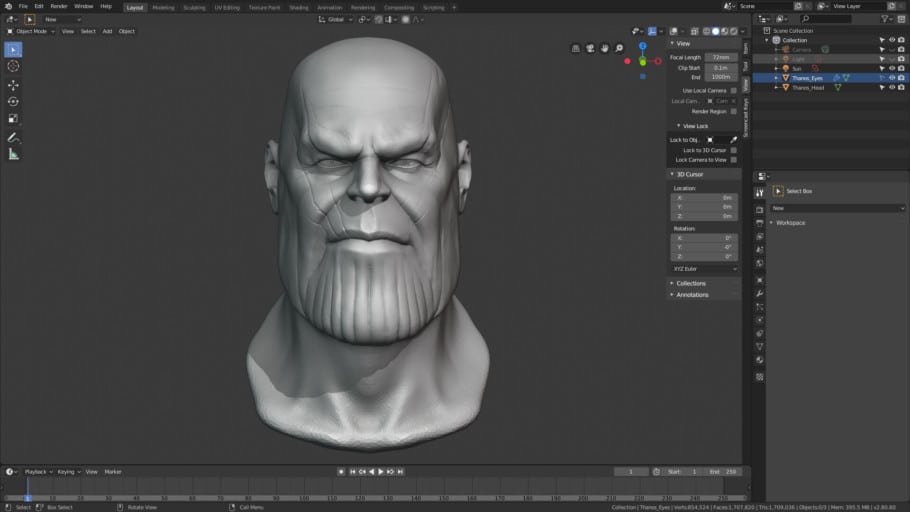Do you want to create your own 3D model but have no idea where to start? Are you frustrated by the lack of documentation about designing 3D models in Blender? Have you recently discovered the power that 3D printing offers as a method for production and cost reduction? If so, this article is for you. Let’s dive right into the subject and learn how you can design your own 3D model in BLENDER.
3D Modeling Basics
The best place to start when you want to learn 3D modeling is to understand the basics of 3D modeling. Put simply, 3D modeling is the process of mapping a 2D drawing, or a collection of 2D drawings, into a 3D object. This process allows you, as the creator, to create the object from the inside out. Now, as a relative novice Blender user, you might be wondering why you would want to create a 3D model in the first place.
A 3D model is useful for a variety of applications, both professional and personal. In the professional sphere, you can find many uses for a 3D model. You can use it to present a visual representation of your idea, product, or service. You can use the 3D model to create a product roadmap, conduct cost analysis, or create a visualization of how your idea could be transformed into a physical product.
Importing And Visualizing CAD Files
When you import a CAD file into Blender, you get an idea of what Blender’s modeling tools are capable of. Let’s say for example you have a CAD model of a door. If you import this CAD door model into Blender, you can use the 3D modeling tools in Blender to design a new door from the inside out. Moreover, you have the option to import the CAD model into Blender and work with the model’s XYZ coordinates.
Alternatively, you can also import the CAD model as a Blender 2.5 file, where you get the option of using a different coordinate system. Now, you have the option of importing a CAD model into Blender and using its XYZ coordinates or importing the CAD model and working with the different coordinate systems that Blender uses.
Designing A Part In Sketchup
As a Blender user, you can begin by importing a Sketchup model into Blender. Sketchup is a 3D modeling application that allows you to create a wide range of architectural and design applications. Once you have your Sketchup model imported into Blender, you can begin designing your parts. It is important to note that you will be working in 2D, not in 3D.
As you can see in the above Sketchup drawing, the drawing is created in a 2D viewport. The 2D viewport has its own orthographic projection, which can be changed. The orthographic projection allows you to see your 2D drawing in the same way that you would see the object in the real world.
Create A Base For Your Final Print
Now that you have designed your part, you can begin to make it a reality. The part is basically a 2D design, which you can use to create the 3D model for the final print. You can start by creating the base for your final print. It is important to note that this base is a 3D design and will eventually become the actual 3D print.
To create the base, you can use a wide range of software. You can start by using Autodesk 123D Design. You can also use Fusion 360, a CAD application for professional product design. Once you have the base for your final print, you can begin to create the actual 3D print.
Creating The Sketchup Mesh
Now it is time to create the Sketchup mesh for your design. The Sketchup mesh is essentially a 2D drawing of your 3D model. It is possible to create the Sketchup mesh directly in Blender. The Sketchup mesh is the base for your final print, which will eventually become the actual 3D print. It allows you to create a blueprint of your 3D model so you can visualize how your final print will look.
To create the Sketchup mesh, invoke the Mesh editing tool. You should see your 3D model in the scene. Select the vertices of your model, which are the points that make up your model. You should now see a small grid in the viewport. This grid is the Sketchup mesh. Now you can either create a plane or wireframe mesh or a solid mesh.
A plane mesh will create a 2D grid, which is useful for visualizing your design. A wireframe mesh will create a mesh with edges, which is useful for visualizing your design. A solid mesh will create a mesh with no edges, which is useful for visualizing your design. Once you have completed the mesh, you can export the Sketchup mesh from Blender.
Printing Your Model
Once your design is ready and the Sketchup mesh is complete, you can begin to create the 3D print. First, you must create the print job file for your Blender file. You can create this job file using a wide range of software. You can start by using Solidworks or 3D Design.
Once you have created your print job file, you can begin to create the actual 3D print. To create the actual print, you must use a number of different software applications. Once you have completed the print job, you can begin the actual process of 3D printing your part.
Conclusion
In this article, you learned how to design a 3D model in Blender and print it. You can also find useful links at the end of the article. The best way to learn 3D modeling is to try it out. The best way to get started with 3D modeling is with free software. In this article, you learned how to design a door in Blender and create a blueprint for the print.




